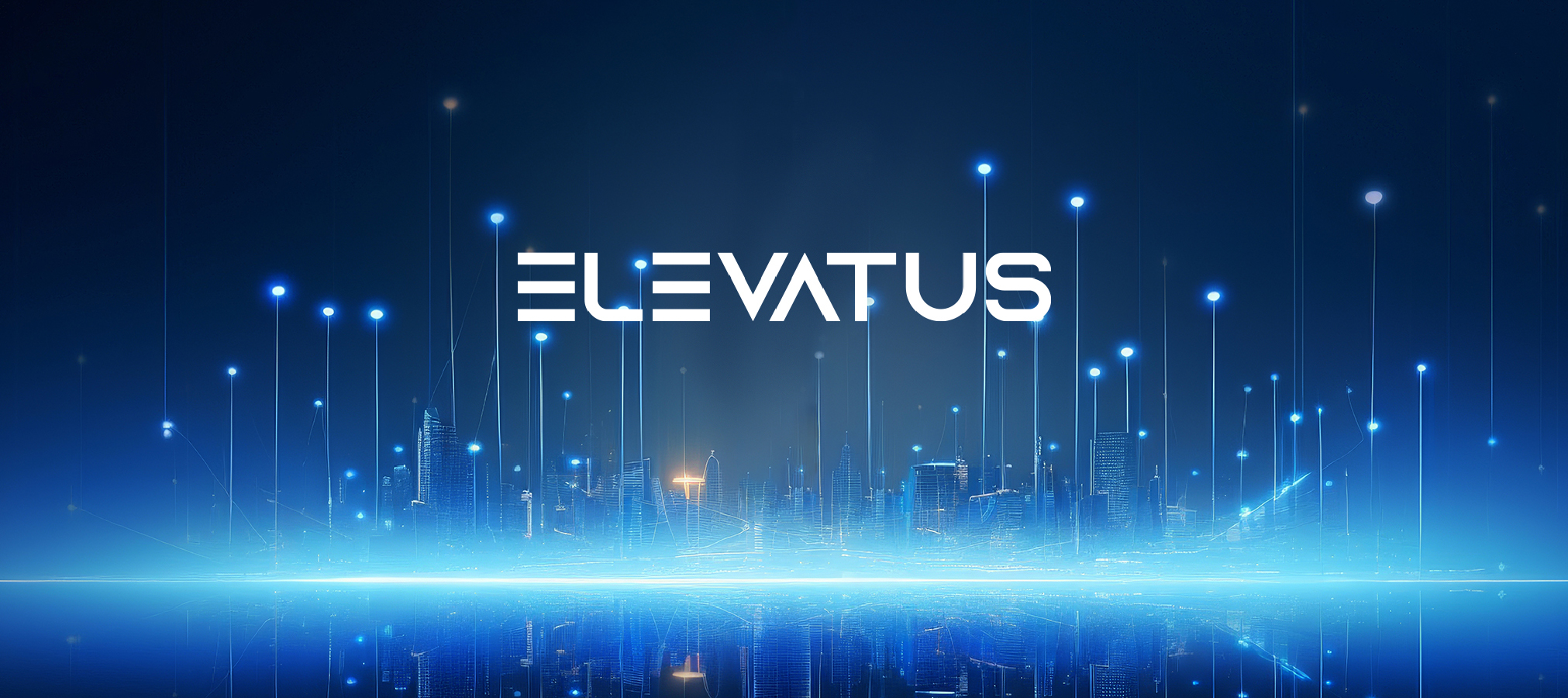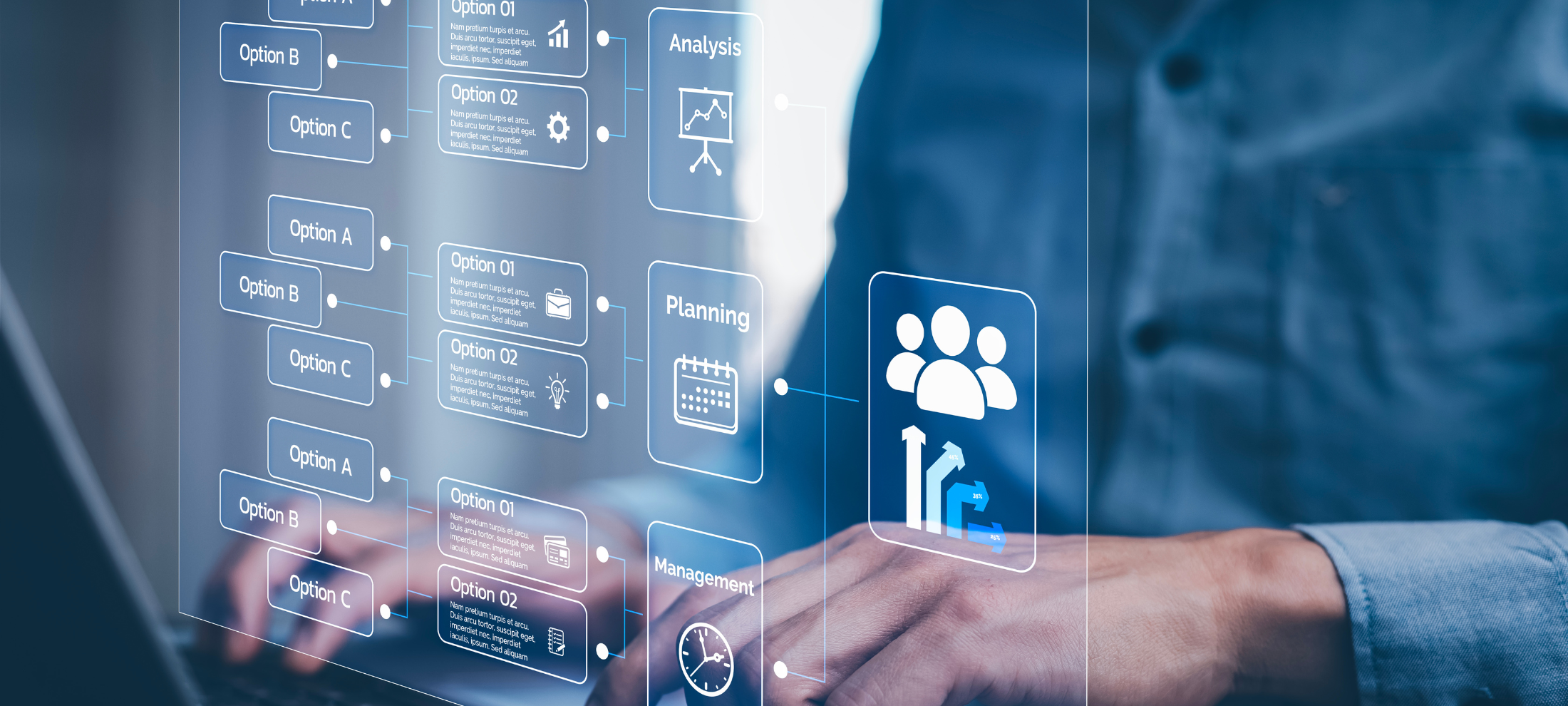
Onboarding Software
7 Wise Tactics to Simplify New Employee Orientation with Onboarding Software
August 31, 2023



Kiran Kazim
Content Writer
Are you looking to streamline your new employee orientation process and create a seamless onboarding experience? Look no further than onboarding software. In today’s fast-paced business world, organizations are turning to this powerful tool to optimize the onboarding journey for new hires. By implementing wise tactics and leveraging the benefits of onboarding software, you can simplify and enhance the crucial stage of employee orientation.
In this blog, we will explore seven practical tactics that will help you simplify new employee orientation using onboarding software. But what is new employee orientation? Let’s first differentiate between onboarding and new employee orientation.
While they may seem similar, there are distinct differences between the two. New employee orientation typically refers to the initial training sessions and introductions that take place when someone joins a company. On the other hand, onboarding encompasses a more comprehensive approach that focuses not just on training but also integrating employees into the organization’s culture and setting them up for long-term success.
Now that we understand the difference, it’s time to address some common issues and challenges faced during traditional employee orientations. These can include overwhelming amounts of paperwork, lack of personalization in training materials, information overload for new hires, and an inefficient use of time for both HR teams and employees alike.
However, by utilizing onboarding software specifically designed to simplify this process, organizations can overcome these challenges and create a more efficient and engaging experience for their new hires. So let’s dive into new employee orientation best practices and explore these seven wise tactics that will help you revolutionize your new employee orientation with the power of onboarding software.
Onboarding vs. Orientation: Decoding the Distinctive Dance of New Employee Integration


Now, let’s dive into how you can leverage onboarding software to simplify and enhance new employee orientation by understanding the key differences between onboarding and new employee orientation.
While the terms ‘onboarding’ and ‘new employee orientation’ are often used interchangeably, it’s important to differentiate between the two.
New employee orientation refers to the initial process of introducing a new hire to their role, team, and workplace culture. It typically includes activities such as completing paperwork, receiving an overview of company policies and procedures, and meeting key personnel.
On the other hand, onboarding is a broader term that encompasses all the activities involved in integrating a new hire into the organization beyond just their first day or week.
By recognizing this distinction, you can effectively utilize onboarding software to streamline both aspects of the process.
Onboarding software allows you to automate administrative tasks such as filling out forms electronically or providing online access to company policies. This not only saves time for both HR staff and new hires but also ensures accuracy in documentation.
Additionally, onboarding software provides a centralized platform where you can deliver interactive training materials, videos, or quizzes that help new employees quickly grasp essential information about their roles or company culture.
By leveraging onboarding software’s capabilities for both new employee orientation and ongoing integration into the organization, you can create a seamless transition for your hires while optimizing efficiency throughout their journey.
As we explore common issues and challenges of traditional employee orientation in the next section, we can identify areas where AI capabilities can enhance and improve the process.
Navigating the Common Hurdles of New Employee Orientation


Amidst the chaotic whirlwind of traditional employee orientation, organizations are left grappling with mind-numbingly arduous processes, frustrating inconsistencies, disengaged new hires, and a myriad of other exasperating challenges.
The time-consuming nature of manual paperwork and repetitive administrative tasks often leads to delays and inefficiencies in the onboarding process. Moreover, without a standardized approach, there is a lack of clarity and consistency in conveying important information to new employees. This can result in confusion and missed opportunities for vital training or orientation sessions.
To exacerbate matters further, traditional employee orientation can be quite monotonous and fail to engage new hires effectively. Sitting through hours of presentations or reading lengthy handbooks can quickly become overwhelming and cause information overload. Additionally, the absence of interactive elements or personalized content makes it difficult for employees to feel connected or motivated during this crucial period.
- Inconsistent delivery: Different departments may have varying approaches to conducting orientations.
- Limited accessibility: Traditional orientations often require physical attendance at specific locations.
- Lack of flexibility: Scheduling conflicts may arise due to rigid orientation dates/times.
By addressing these common issues through the utilization of hr onboarding software, organizations can revolutionize their employee orientation experience. With streamlined processes and automated workflows, tasks that were once burdensome can now be completed efficiently within a few clicks. Furthermore, by incorporating multimedia elements such as videos or interactive modules into the onboarding process, new hires are more likely to stay engaged and retain important information. This not only simplifies the overall experience but also enhances knowledge retention and promotes a sense of belonging from day one.
Why Onboarding Software is the Future of Employee Integration


Revolutionize your employee onboarding experience with the power of technology-driven solutions tailored for seamless and engaging orientation. Onboarding software offers numerous benefits that can simplify and enhance the new employee orientation process. By leveraging this software, you can streamline administrative tasks, provide consistent and standardized information, and foster a sense of connection and engagement with your new hires.
One of the key advantages of using onboarding software is its ability to automate administrative tasks. From collecting personal information to completing necessary paperwork, these software solutions can save significant time and effort for both HR personnel and new employees. With just a few clicks, new hires can input their information securely and efficiently, eliminating the need for manual data entry or paper-based processes.
Moreover, onboarding software allows organizations to deliver consistent and standardized information to all new employees. This ensures that every individual receives the same level of guidance and support during their orientation period. From company policies and procedures to training materials, onboarding software provides a centralized platform where all essential resources are readily accessible. This not only reduces confusion but also helps new hires feel more confident about their role within the organization.
Incorporating onboarding software into your employee orientation process sets a strong foundation for an effective transition into a new role. It simplifies administrative tasks while providing consistent information in an engaging manner.
7 Tactics to Harness Onboarding Software to Perfection
In the digital age, the first days of a new hire can set the tone for their entire journey with a company. Traditional methods, while tried-and-true, often fall short in a dynamic, tech-savvy environment. Enter the game-changer: onboarding software. No longer just a tool, but a strategic ally, this software can transform those first tentative steps of an employee into a confident stride. Dive in as we unveil seven powerful tactics to optimize onboarding, ensuring a perfect meld of technology and human touch.
The Magic of Automating Routine Processes
Use onboarding software to streamline repetitive tasks and free up valuable time for HR professionals, allowing them to focus on more meaningful aspects of the new employee orientation process, like building a strong foundation for the organization’s growth – just like how automating routine processes is akin to clearing away clutter and creating space for new possibilities. For example, an end to end onboarding software like EVA-BOARD, automates mundane onboarding processes. No more manual tasks, paper forms, reminder notes, or cheat sheets. With EVA-BOARD by your side, you can streamline the entire onboarding process, create custom onboarding checklists, and connect new hires with teammates before their first day.
| Tasks | Traditional Approach | Onboarding Software Solution |
| Employee Data | Manual entry of employee data into multiple systems | A centralized platform that automatically syncs information |
| Paperwork | Printing, signing, scanning, and filing physical documents | Digital forms that can be completed and signed online |
| Training Materials | Printing and distributing physical training manuals | Online access to interactive training modules |
| Task Assignments | Emailing task details individually to employees | Automated task assignment with reminders and notifications |
By automating these routine processes, HR professionals can eliminate tedious administrative work while ensuring accuracy and efficiency. This not only saves time but also reduces the risk of errors or delays due to manual handling. With onboarding software, employees’ data can be seamlessly synced across different systems, eliminating the need for duplicate entries. Digital forms make it easy for new hires to complete paperwork online, reducing paper waste and simplifying document management. Additionally, interactive training modules accessible through the software provide a more engaging learning experience.
Making First Impressions Count with Dynamic Digital Tours
Embark on an exciting virtual journey that immerses new hires in the heart of your organization’s culture and values with interactive digital tours available through onboarding software. These tours serve as a powerful tool to simplify and enhance new employee orientation, providing a dynamic and engaging experience.
Here’s how interactive digital tours can make a difference:
- Virtual Exploration: Allow new hires to explore different departments, offices, or even remote locations virtually. They can navigate through interactive maps and get a sense of the physical layout of the organization without leaving their desks.
- Multimedia Content: Incorporate videos, images, and audio into the tours to provide an immersive experience. Showcasing success stories, testimonials from current employees, or glimpses into company events helps create an emotional connection between new hires and the organization.
- Gamification Elements: Add gamification elements such as quizzes or challenges within the tour to keep new hires engaged and encourage active participation. This not only makes the onboarding process more enjoyable but also helps them retain important information about company policies, procedures, and values.
- Interactive Q&A Sessions: Integrate live chat features where new hires can ask questions during the tour or have scheduled Q&A sessions with key personnel from different departments. This fosters communication and collaboration right from the start, making them feel supported in their journey towards becoming successful members of your organization.
With interactive digital tours offered by onboarding software, you can create a seamless transition for new hires into your organizational culture while ensuring they have access to vital information in an engaging manner. As you guide them through this immersive experience, it’s time to move on to customized learning paths that cater specifically to each individual’s role within your organization, allowing them to acquire the necessary skills and knowledge to excel in their positions.
By tailoring the learning paths, we ensure that new hires receive targeted training and resources that are directly relevant to their job responsibilities, enabling them to quickly adapt and contribute effectively to the organization.
Additionally, these customized learning paths foster a sense of personal growth and development, empowering individuals to take ownership of their learning journey and enhance their professional capabilities.
Tailoring Success with Customized Learning Roadmaps
By tailoring individualized learning paths within the onboarding software, organizations can create a personalized and immersive training experience that equips new hires with the specific skills and knowledge needed to excel in their roles. Customized learning paths allow organizations to cater to the unique needs of each new employee, ensuring that they receive targeted training materials that align with their job responsibilities and goals. This not only saves time by eliminating unnecessary information but also increases engagement and retention as new hires can focus on relevant content.
To illustrate how customized learning paths work, imagine a table with three columns and five rows. In the first column, there are different job roles such as sales representative, customer service agent, marketing coordinator, IT specialist, and HR assistant. The second column represents the skill areas required for each role, such as product knowledge, communication skills, data analysis, technical troubleshooting, and recruitment processes. The third column lists the specific modules or courses available within the onboarding software that address those skill areas.
By following this approach, organizations can efficiently guide new hires through a structured learning journey that covers all essential aspects of their job while allowing them to focus on what matters most for their specific roles. This tailored approach not only enhances productivity but also boosts confidence in new employees by providing them with targeted resources from day one. With customized learning paths in place during orientation using onboarding software, organizations can set their new hires up for success.
Unlocking the Potential of Digital Resource Libraries
To enhance the onboarding experience, you can leverage digital resource libraries to provide new hires with comprehensive training materials and reference guides. These libraries can be easily accessed through the onboarding software, allowing new employees to learn at their own pace and refer back to information as needed.
By digitizing these resources, you eliminate the need for physical copies or lengthy orientations, saving time and resources for both the organization and the new hires.
Digital resource libraries can house a variety of materials such as employee handbooks, company policies, training videos, and FAQs. This centralized platform ensures that all new hires have access to the same set of information, promoting consistency in training across different departments or locations. Moreover, digital libraries enable easy updates and revisions to ensure that new employees receive the most up-to-date information.
With digital resource libraries as part of your onboarding software, new hires can feel empowered and supported in their learning journey. They can explore different topics at their own pace without feeling overwhelmed by a barrage of information during orientation sessions. This personalized approach fosters a sense of autonomy while still providing guidance and structure.
Mastering Productivity with Scheduling and Reminders
Ensure that you never miss a beat during the onboarding process by utilizing the scheduling and reminder features of your software. These features will keep you organized and on track with important training sessions and tasks for new hires.
With these features, you can easily create a comprehensive schedule for each new employee. This schedule will include all necessary training sessions, meetings, and orientation activities. The software will send automated reminders to both you and the new hire, ensuring that everyone is aware of upcoming events and deadlines.
This not only helps you stay organized but also provides a sense of structure and reliability for new employees as they navigate their first few weeks in the organization.
- Peace of mind: By using scheduling and reminder features, you can have peace of mind knowing that all crucial steps in the onboarding process are accounted for. You don’t have to rely solely on memory or manual tracking methods, reducing the risk of forgetting important tasks or leaving out essential information.
- Efficient time management: The scheduling feature allows you to allocate specific time slots for different aspects of the orientation process. This ensures that both you and the new employee can make the most efficient use of your time together. Additionally, reminders help keep everyone on track with deadlines, preventing any unnecessary delays or confusion.
- Improved communication: Scheduling and reminder features foster better communication between you and new hires. Automated reminders ensure that both parties are well-informed about upcoming events or tasks, reducing miscommunication or misunderstandings. It also shows your commitment to providing a smooth onboarding experience by keeping open lines of communication throughout the process.
The Power of Feedback and Dynamic Assessments
Get the pulse of your new hires and unlock valuable insights to enhance their onboarding journey with the power of feedback and assessments. Onboarding software allows organizations to easily collect feedback from new employees, giving them a platform to express their thoughts, concerns, and suggestions throughout the orientation process. This feedback can be in the form of surveys or open-ended questions, providing valuable information about the effectiveness of the onboarding program and identifying areas for improvement.
To further enhance the feedback process, assessments can be incorporated into the onboarding software. These assessments can be used to evaluate new hires’ understanding of important information and concepts covered during orientation. By assessing their knowledge retention and comprehension, organizations can identify any gaps in training or areas that may need additional reinforcement. This not only helps ensure that new employees are properly equipped for their roles but also provides an opportunity for continuous improvement in the onboarding process.
| Feedback Benefits | Assessment Benefits |
| Allows new hires to share their thoughts and concerns | Evaluates knowledge retention during orientation |
| Identifies areas for improvement in the onboarding process | Highlights gaps in training or understanding |
| Provides a platform for suggestions from new employees | Helps ensure new hires are prepared for their roles |
| Enhances communication between new employees and HR teams | Offers opportunities for continuous improvement |
By leveraging feedback and assessments through onboarding software, organizations gain valuable insights into how to improve their orientation process. However, enhancing employee experience doesn’t stop there – incorporating social integration features into your onboarding software will help foster connections among new hires.
Boosting Team Synergy with Social Integration Tools
Experience a seamless and enjoyable onboarding journey with the incorporation of social integration features in your organization’s new employee orientation process. By leveraging onboarding software that includes social integration features, you can create a sense of belonging and community from day one for your new hires.
Here are five ways these features can simplify and enhance your new employee orientation:
- Virtual introductions: Allow new hires to introduce themselves to their colleagues through virtual platforms, fostering connections even before they step foot into the office.
- Team-building activities: Incorporate interactive team-building exercises into the onboarding process, promoting collaboration and camaraderie among employees.
- Peer mentoring programs: Implement peer mentoring initiatives where experienced employees guide new hires through their early days, offering support, advice, and valuable insights.
- Discussion forums: Create online discussion forums where new hires can ask questions and seek guidance from their peers or subject matter experts, facilitating knowledge sharing within the organization.
- Social events: Organize virtual or in-person social events for new employees to interact with their colleagues outside of work-related tasks, building relationships in a relaxed environment.
By incorporating these social integration features into your onboarding software, you can foster a sense of inclusion and connection among your new employees. This will not only simplify the orientation process but also enhance their overall experience as they join your organization.
Wrap Up
In the ever-evolving world of employee onboarding, simplicity and effectiveness walk hand-in-hand. The fusion of smart tactics and innovative software not only streamlines the process but truly enhances the experience for every new hire, setting the stage for lasting success and commitment. And while these seven tactics are your roadmap to a seamless orientation, the ultimate destination is the software you choose.
So, are you still looking for an onboarding software for your company?
EVA-BOARD is a tool crafted meticulously to onboard and nurture new hires even before their first official day, ensuring they feel integrated, valued, and prepared. Curious to see EVA-BOARD in action and revolutionize your onboarding process? Request a free demo today and embark on a transformative journey towards perfect employee integration.
Turn top talent to employees fast
Hire, assess, onboard and manage top talent for every job. See how Elevatus streamlines everything; from acquire to new hire.
Request a demoAuthor



Kiran Kazim
Don't miss a thing!
Stay one step ahead. Subscribe and get the latest updates, news, and insights from Elevatus straight to your inbox.



![7 Ways To Build a Successful Onboarding Program [And How Onboarding Software Can Help] | Elevatus Guys discussing the best onboarding program](https://www.elevatus.io/wp-content/uploads/2023/08/2-17.png)



